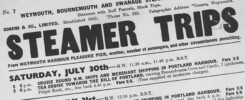It is now seventy years since the retreating British army was evacuated from the beaches of Dunkirk in late May and early June 1940. This massive operation was made possible by the summoning up, at little more than a moment’s notice, of an armada of up to one thousand three hundred small ships and boats, twenty-six of which were paddle steamers, to bring the men home.
The paddle steamers were:
From the Clyde: Duchess of Fife, Marmion, Oriole and Waverley.
From P & A Campbell on the Bristol Channel: Brighton Belle, Brighton Queen, Devonia, Glen Avon, Glen Gower, Plinlimmon ex Cambria, and Snaefell ex Waverley (a bit of potential confusion here with two Waverleys at Dunkirk!) and Westward Ho!
From the Thames fleets: Crested Eagle, Essex Queen, Golden Eagle, Laguna Belle, Medway Queen, Queen of Kent, Royal Eagle and Thames Queen.
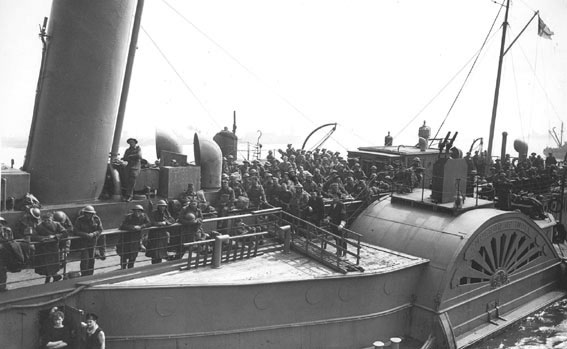
From Cosens of Weymouth: Emperor of India, pictured above with troops aboard.
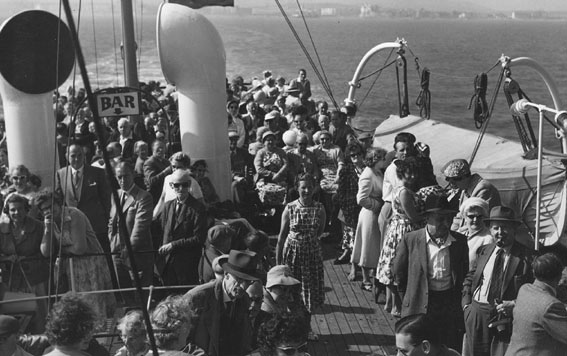
From the Southern Railway at Portsmouth: Freshwater, (pictured above in 1960 with a good load on a cruise along the Sussex Coast as the Sussex Queen), Portsdown, Sandown and Whippingham.
And from Red Funnel at Southampton: Gracie Fields and Princess Elizabeth.
The evacuation started on Sunday 26th May 1940 and ended just over a week later on Monday 3rd June after a total of 338,266 troops had been rescued.
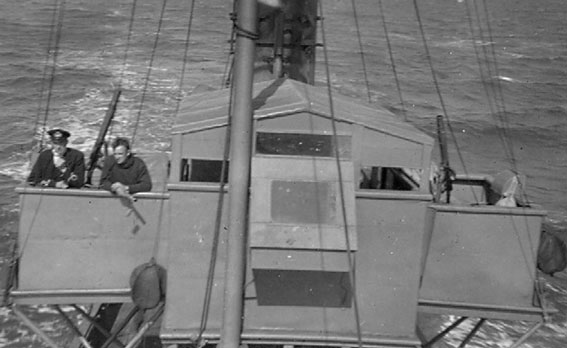
Mike Ledger has recently uncovered a fascinating archive of pictures and notes about his uncle, Sub-Lieut Eric Bellamy RNVR, (pictured above left) who was in command of the armed drifter HMS Thrifty which was undergoing training at Portland when called up to proceed to Dover and on to Dunkirk to take part in the evacuation.
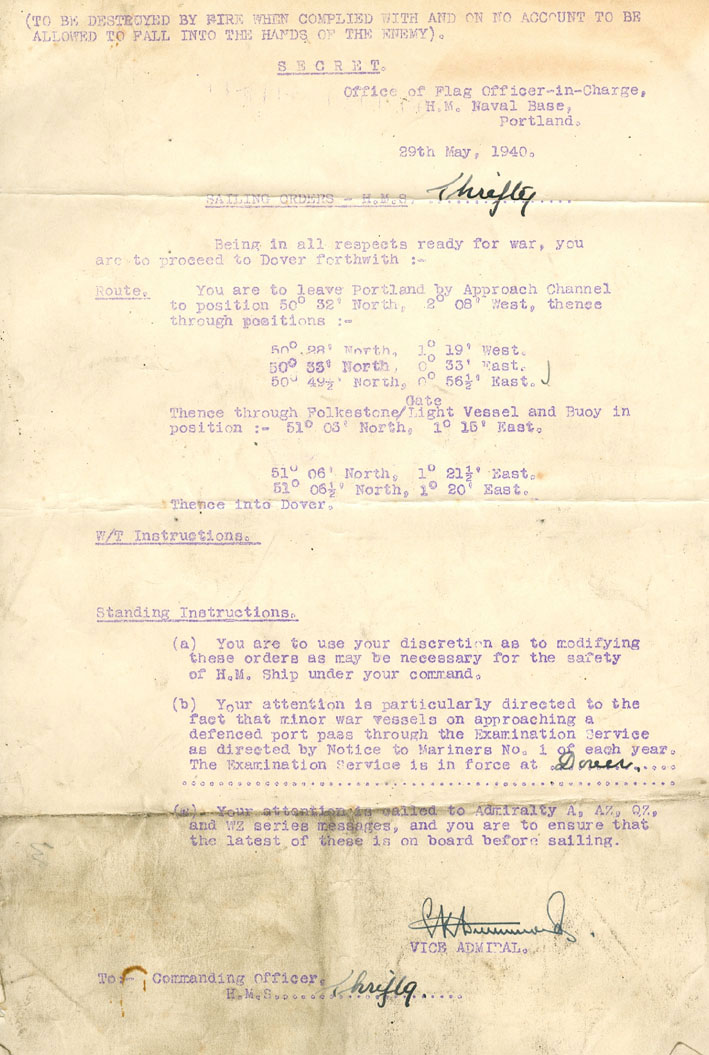
The notes include passage plans for the trip from Portland to Dover and then on to Dunkirk which provide a fascinating insight into how the ships got to and from Dunkirk.
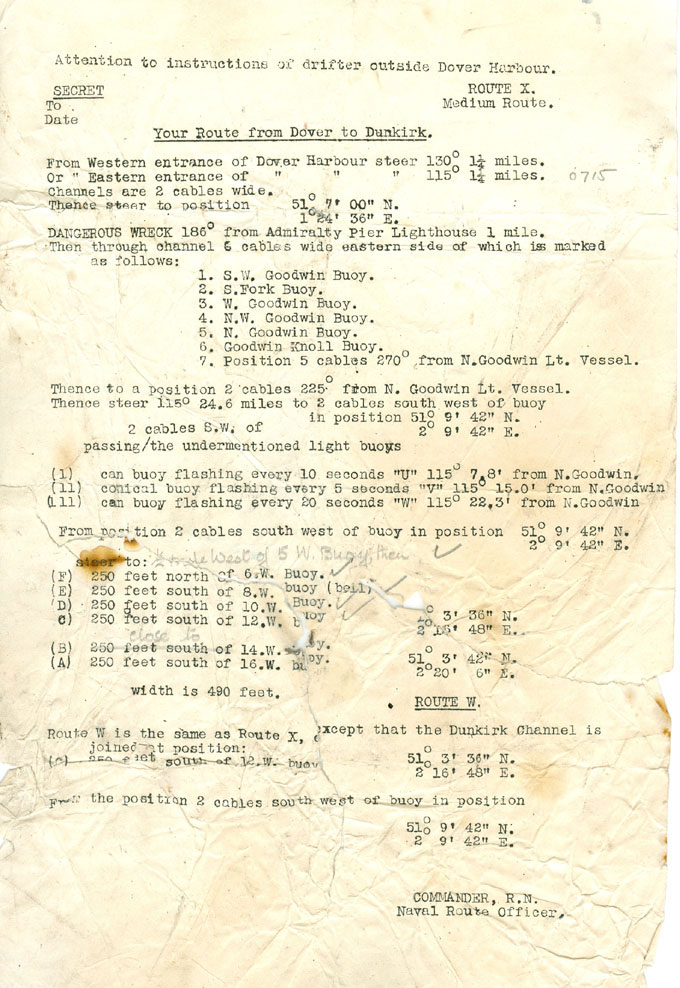
At some stage in the operation Sub-Lieut Bellamy transferred to another Armed Drifter HMS Kindred Star which, whilst towing several smaller boats full of soldiers home on 2nd June, was bombed causing severe damage to the ship and blowing Bellamy overboard. He banged his head in the process and got concussion but, despite this, took a ship back to Portland before going to hospital in Bath. Mike Ledger has a letter written by Bellamy to his mother describing what happened in which the writing is like a child’s, totally different from normal. What horrors and triumphs of bravery and determination against all odds went on that week.
Of the paddle steamers which took part, six were sunk, the Brighton Belle and Gracie Fields on Tuesday 28th May, Crested Eagle and the Clyde Waverley on Wednesday 29th May, Devonia on Thursday 30th May, and Brighton Queen on Friday 31st May.
Of the remaining Emperor of India was re-built after the war and returned to her old services from Bournemouth, finally being scrapped in 1957.
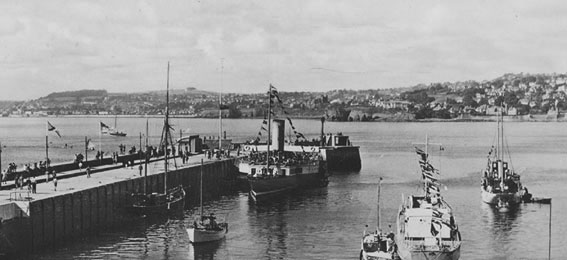
Essex Queen (pictured above) started a new but short career at Torquay from 1947/49 and was scrapped in 1951.
Freshwater returned to her old Lymington to Yarmouth route and enjoyed an extended career as the Sussex Queen on the Sussex Coast in 1960 and the Swanage Queen at Bournemouth in 1961 before being scrapped in 1962.
Glen Avon was lost on service as a minesweeper off the Normandy Coast in 1944.
Glen Gower was returned to P & A Campbell after the war and ran on both the Bristol Channel and the South Coast becoming the last paddle steamer to operate a regular Cross Channel summer service from Brighton, Eastbourne and Hastings to Boulogne in 1956 before finally being scrapped in 1960.
Golden Eagle returned to her old routes on the Thames from 1947/49 and was scrapped in 1951.
The elderly Laguna Belle finished the war as an accommodation ship and was scrapped in 1946.
Marmion was sunk by a bomb at Harwich in 1941.
The worn out Oriole and Plinlimmon ex Cambria became accommodation ships and were scrapped in 1946.
Portsdown returned to her Portsmouth to Ryde ferry duties but hit a mine and sank off Southsea on an early morning run in September 1941.
Queen of Thanet returned to her old Medway and Thames sailings in 1946, was sold to Red Funnel in 1949, re-named Lorna Doone and put into service from Bournemouth and later Southampton. She was withdrawn after the 1951 season and scrapped.
The Royal Eagle, the most luxurious and commodious UK excursion paddle steamer ever built, returned to her old Thames services from 1946 to 1950 and was scrapped in 1953.
Sandown and Whippingham returned to their old routes from Portsmouth to the Isle of Wight in 1945. They were scrapped in 1963 and 1966 respectively.
Snaefell returned to her minesweeping duties based at North Shields but was sunk on patrol thirteen months later.
After the war the Thames Queen was in such poor condition that she was thought unfit for further work and so was scrapped in 1947.
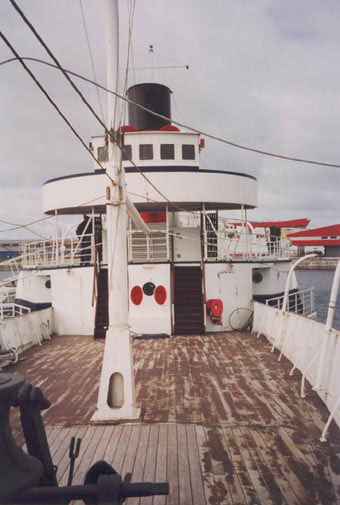
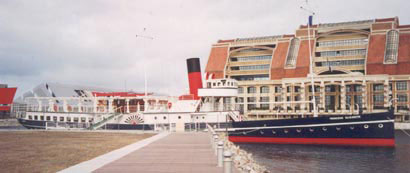
Only one of the Dunkirk paddle steamers, the Princess Elizabeth (pictured above at Dunkirk in 2000) remains intact today, although minus her engine and boiler. She enjoys a new life as a conference venue close to the beaches from which she rescued so many men.
A second paddle steamer, the Medway Queen was largely intact, although in very poor condition, until a couple of years ago when she was deconstructed with pretty much all the steelwork going for scrap. The engine and other bits and pieces were saved and will be installed in a brand new hull which is currently being built from scratch in Bristol with money provided by the Heritage Lottery Fund.
For more information on the restoration of the Medway Queen click here.

Despite the odds stacked against this evacuation, it was a magnificent success. Luck was on its side. And perhaps the greatest piece of luck was that the weather was idyllic with generally light airs for the whole of the week. If the wind had been blowing with any force, particularly from the north, it would have been a very different story which might have altered the whole course of the Second World War. The ships would not have been able to get to the beaches and, if they had not been rescued, many of the 338,266 troops might have died with many others becoming prisoners of war. There is therefore much reason to thank and pay tribute to this British fleet of one thousand three hundred little ships, including the twenty-six paddle steamers, as well as to all the men, like Sub-Lieut Bellamy, who went through so much to make the evacuation the success that it was.
Kingswear Castle returned to service in 2023 after the first part of a major rebuild which is designed to set her up for the next 25 years running on the River Dart. The Paddle Steamer Kingswear Castle Trust is now fund raising for the second phase of the rebuild. You can read more about the rebuilds and how you can help if you can here.
John Megoran


